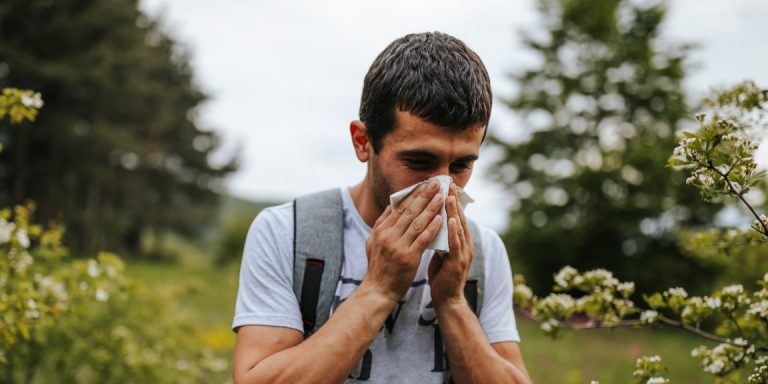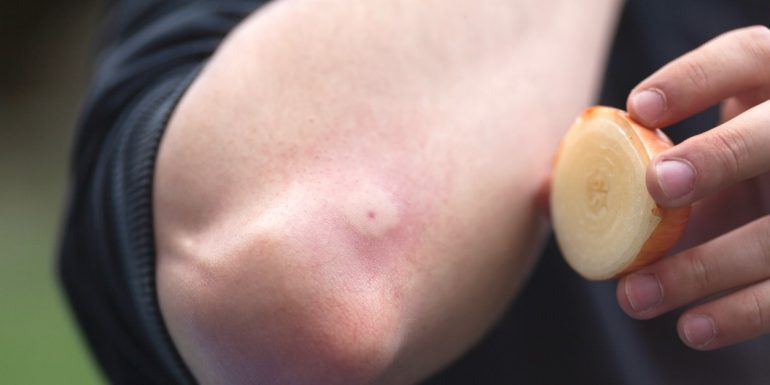
Desensitisation: how to get rid of allergies
The cause of certain allergies can only be fought using desensitisation. How does this therapy work? Which allergies is it suitable for? And what are the risks? We help shed some light on the subject.
Desensitisation is also known as hyposensitisation, allergy vaccination or specific immunotherapy (SIT). This therapy involves targeted training to help the immune system get used to the allergen, i.e. to the substance that triggers the allergic reaction.
How does desensitisation work?
If we have an allergy, our immune system is overly sensitive in the way it reacts to a substance that is actually harmless. This leads to symptoms such as watery eyes, shortness of breath and even circulatory arrest. Desensitisation is a way of trying to train the immune system out of this over-reaction by gradually allowing it to get used to the allergen.
The first step involves a physician carrying out an allergy test to identify the allergen. The immune system is then repeatedly and deliberately confronted with this allergen. The dosage starts off small and then continues to increase. This is known as the increased exposure phase. When the individual’s maximum tolerance dose is reached, this amount will continue to be administered on a monthly basis. This is the maintenance phase. The body’s allergic reaction can lead to side effects during both phases. Find out more in the text below.
Desensitisation is successful if the allergy symptoms are reduced on a long-term basis or, ideally, if they stop occurring altogether. The chances of this happening are high; the therapy is successful in around 80% of cases. However, success cannot be guaranteed.
What types of desensitisation are there?
There are two types of desensitisation. Subcutaneous Immunotherapy (SCIT) involves injecting the allergen underneath the skin, for example into the upper arm. With sublingual Immunotherapy (SLIT), the substance is administered under the tongue, either as a liquid solution or in the form of a tablet.
Who carries out the treatment?
Desensitisation must be prescribed by an allergist. The treatment, however, can be carried out by a general practitioner or paediatrician with experience in this field.
Which allergies can be treated with desensitisation?
Desensitisation can be used to treat over-reactions to the following allergens:
- Pollen
- Dust mites
- Mould
- Animals, e.g. cat hair
- Bee and wasp venom
These are known as immediate allergies. As the name suggests, these allergies cause the immune system to react to the allergen very quickly, i.e. within seconds or minutes.
Contact allergies, such as those to nickel or arnica, cannot be treated using desensitisation. This is because contact allergies have different immunological causes to immediate allergies.
Our health consultation advisors are happy to help you.
When should desensitisation not be performed?
An allergist will decide whether desensitisation is a potential therapy option. Frequent exclusion criteria include pregnancy at the start of treatment, cardiovascular diseases, taking beta-blockers and severe autoimmune diseases or uncontrolled asthma.
How long does treatment take?
Desensitisation usually takes three years, except in the case of allergies to insect venom. For allergies to wasp or bee venom, treatment tends to take three to five years.
What risks are associated with desensitisation?
There are a number of side effects that can occur during desensitisation.
Minor side effects include fatigue and allergic reactions such as sneezing or watery eyes. The injection site can also become red, swell up or start to itch.
More serious side effects include hives over the entire body – i.e. raised itchy and red dots on the skin – or swelling in the throat area. Both are easy to treat.
The most serious possible side effect, anaphylactic shock, rarely occurs. This type of allergic reaction can lead to respiratory and circulatory arrest. This is why emergency medication is always on hand in the practice.

The expert provided the editorial team with advice and input for this article. Julia Pieh (doctorate in pharmacy and toxicology, pharmacist, naturopath) works in the Helsana Health Consultation Service.

Newsletter
Find out more about current health issues every month and get all the information you need about our attractive offers from all Helsana Group companies * delivered by e-mail to read whenever it suits you. Our newsletter is free of charge and you can sign up here:
We did not receive your information. Please try again later.
* The Helsana Group comprises Helsana Insurance Company Ltd, Helsana Supplementary Insurances Ltd and Helsana Accidents Ltd.